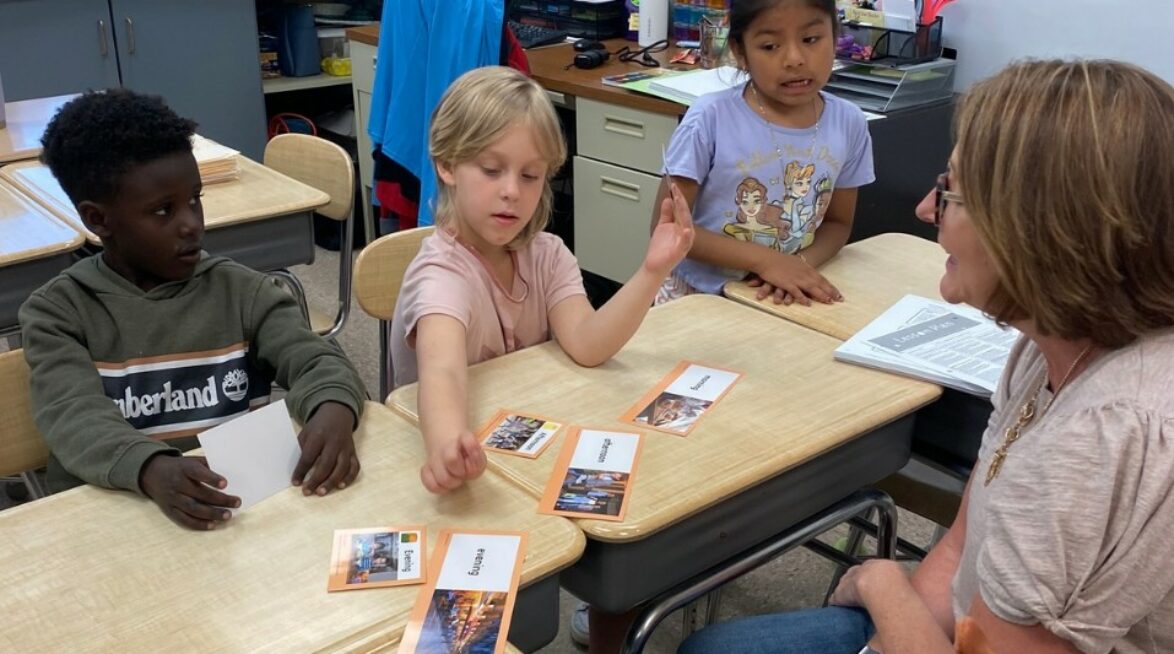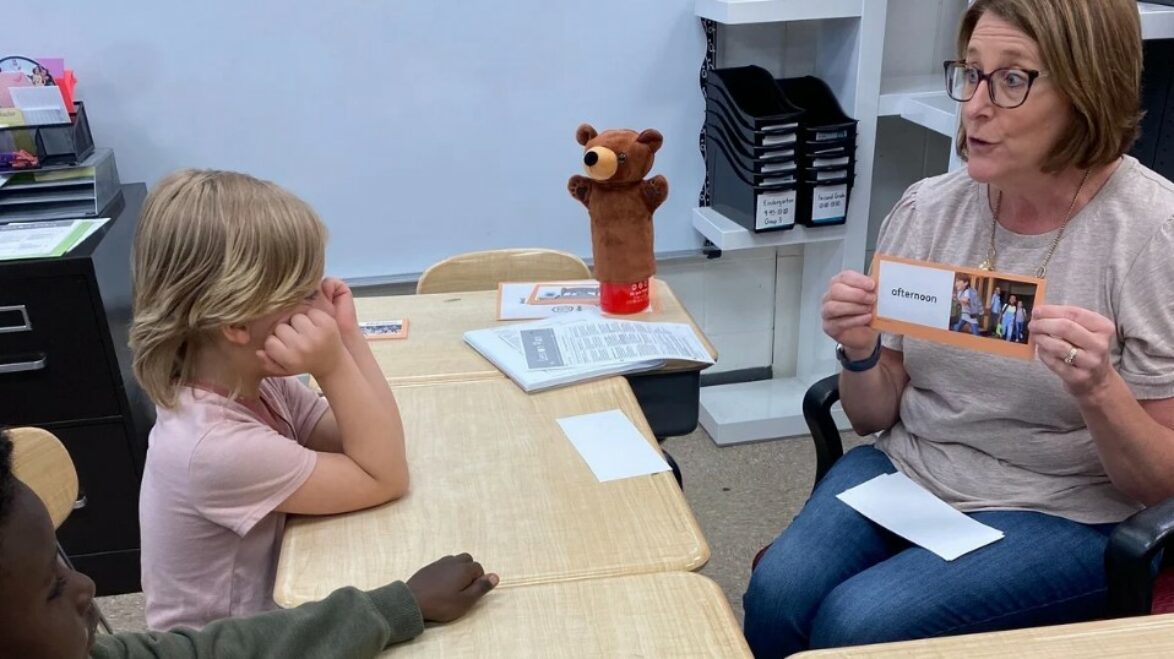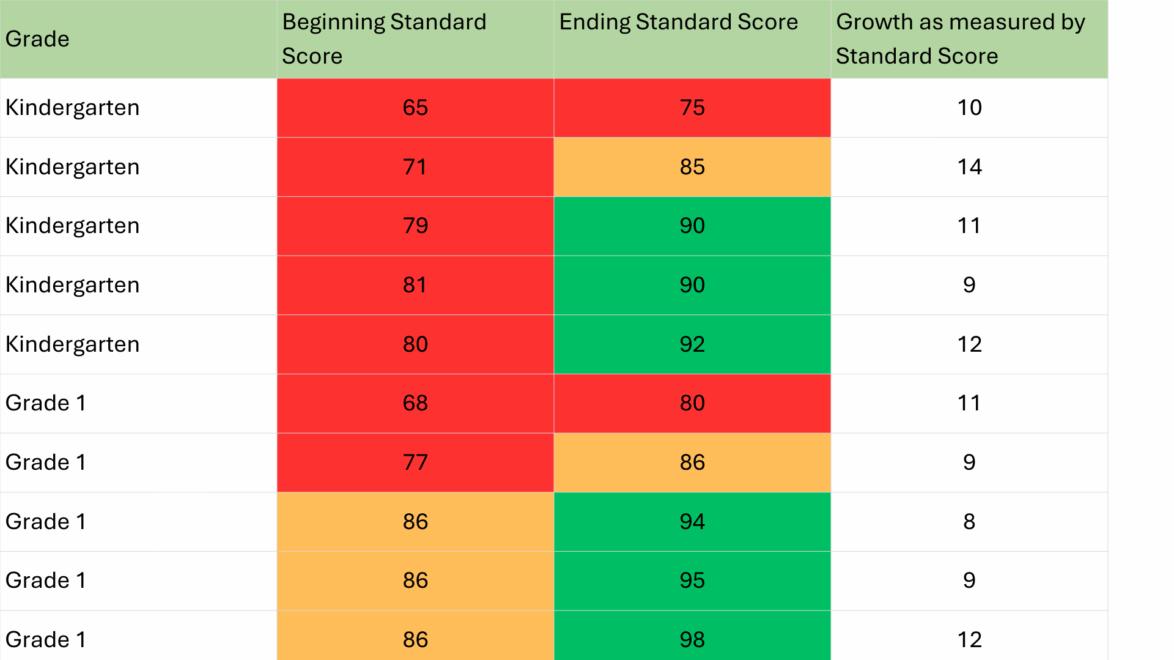A Game-Changer for Language Development: Our Journey with TEL Ted
Rebecca Boone Elementary in rural Missouri serves a high-need population, with 50% of students on free or reduced lunch and a growing number of English Language Learners. Seeing increasing problems with oral language and vocabulary, the school sought a comprehensive solution. Wendy Buerk, Instructional Support Teacher and Title 1 Reading Specialist, shares why they chose the TEL Ted Program and the impact it's having.

Increased Need For Support
Our Speech Language Pathologists were overwhelmed by the number of student referrals and simply couldn’t support everyone who needed help. At the same time, more children in our classrooms did not have foundational language skills, but didn’t qualify for SLP support. After completing a Science of Reading training program, I began exploring new options to support our students. This is when I discovered the Tel Ted Program. I was immediately drawn to its emphasis on oral language enrichment within the classroom and thought this is exactly what we need to help build those foundational skills.
A Science-Led, Data-Driven Approach
The training package provided with TEL Ted was comprehensive and well-balanced, providing us with just the right blend of scientific foundation and practical implementation. The content was thorough, yet accessible, and we did not feel overwhelmed. Our team especially valued the videos demonstrating how to run the different TEL Ted sessions; it gave them the confidence to begin delivering sessions right away. The ongoing support has been incredibly helpful, allowing us to share feedback, refine our approach, and ensure we are making the most of what the program has to offer.
We began by using LanguageScreen, the oral language screener included with the TEL Ted Program, to assess all students in K–5.
While adding another assessment might sound daunting, LanguageScreen was quick to administer, and our teachers immediately saw the value in the insights it provided. It gave us clear, data-driven direction on how best to support our students.
Creating a Supportive Environment
We integrated TEL Ted into daily lesson plans, using the activities to spark interactive discussions and encourage meaningful conversations among students. The program’s design ensured that every child, regardless of their language proficiency, felt included in the learning process, creating a supportive environment where students could thrive together.
The intervention sessions provided the children with a clear, consistent routine. They knew what to expect and how each lesson would progress. This structure provided the children with a space where they felt safe to communicate what they were thinking, and when they got answers correct, they were able to celebrate their success. We soon saw them carrying this confidence and communication back into the classroom.
In one of our kindergarten classrooms, the teacher often invites her students to retell parts of stories to the class. One of her children, who at the start of the year was very quiet and never wanted to participate, surprisingly volunteered one day. He was able to recount the whole story, naming characters and retelling events. The teacher was amazed by his progress; it was clear that the structured language support he had received through the TEL Ted sessions had given him the confidence to shine in front of his peers. The class even gave him a round of applause.

Developing Confident Communicators
The targeted exposure to vocabulary has helped our English Language Learners not only grow their vocabulary but also their confidence in communicating with their teachers and other students, and to be able to convey their needs and thoughts. We had a Hispanic student in one of our intervention groups who joined our school this year with no English – he even had a note to hold up if he needed the bathroom. Now, he is greeting all the teachers by name in the hallway and telling them stories about his day. The transformation is just remarkable.
The students love interacting with Ted, waking him up each day to say good morning. It helped them to build a connection with Ted, which helped with engagement in the intervention sessions. They loved to incorporate him into their daily routines and make him part of their group.
We had a boy in one of our intervention groups who had experienced a lot of trauma in his life, and it was very difficult to get him to speak or engage. Now, after TEL Ted, I can’t get him to be quiet and often remind him of Ted’s Listening Rules. He has blossomed in his ability to communicate and in wanting to share his thoughts, and this is because of the confidence the TEL Ted Program has given him through not only the structure but also having Ted as their champion.
A Transformative Program
TEL Ted has been transformative for our school. The changes we had seen in our students, in the way they interacted in class and with each other, was reflected in our LanguageScreen scores. In both Kindergarten and Grade 1, 60% of students in the intervention groups went from having clear language concerns to no concerns. We are empowering our students, from all backgrounds, to reach their full potential. I wholeheartedly recommend the TEL Ted Program to elementary schools looking to strengthen oral language skills and build strong foundations for student success.
The Tel Ted Program has been a game-changer for our students. We have seen remarkable changes in our classrooms. We have seen significant improvement in oral language proficiency, vocabulary acquisition, and overall engagement. Equally Important, we are seeing more collaboration and enhanced critical thinking skills.


